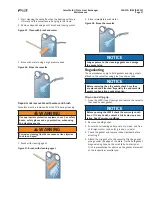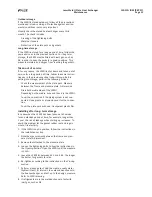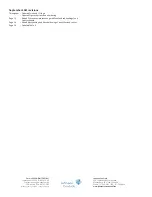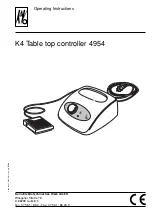
190.210-IOM (SEP 21)
Page 14
LazerWeld II Plate Heat Exchanger
Maintenance
To keep the LZWII in good condition, clean the plates, or
cassettes, on a regular basis. The frequency depends on
several factors such as the type of media and tempera-
tures. The style of cleaning required is dependent on the
type and severity of contamination
You can use four methods for cleaning.
•
Backflush the heat exchanger.
•
Cleaning in place by circulation of CIP fluid without
dismantling the SWPHE.
• Dismantle the SWPHE onsite and have the plates re-
conditioning at an authorized service center.
• Mechanical or chemical cleaning by dismantling the
SWPHE onsite.
Backflushing
Backflushing is the reversal of flow for a short period of
time. It flushes out matter that accumulates at the PHE
inlet. Backflushing can be designed for a manual process
or an automatic process.
A standard automatic backflush design is often set to do
this three times a day for 30 s. By automatically remov
-
ing this loose debris on a daily basis, the backflush valve
contributes to many years of trouble-free service.
Figure 25: Backflushing
Cleaning-in-place
The CIP equipment permits cleaning of the PHE without
opening it. Benefits of CIP include:
• Removal of fouling and lime scale deposits.
• Passivation of cleaned surfaces to reduce susceptibility
to corrosion.
• Neutralization of cleaning liquids before draining.
NOTICE
If cleaning in place, use modulating or soft pumps to
avoid high flow rates and pressure shocks.
WARNING
Use appropriate protective equipment, such as safety
boots, safety gloves and eye protection, when using
the cleaning agents.
WARNING
Corrosive cleaning liquids can cause serious injuries
to skin and eyes!
See the specifc CIP equipment instructions for cleaning
procedures.
Frick guarantees that plates (cassettes), gaskets, and ad-
hesive cannot be damaged if the procedures and cleaning
agents specified are used.
If CIP is inappropriate, cleaning must be done manually.
See
Reconditioning at an authorized
center
Sometimes it is necessary to send the plate pack out for
reconditioning. The factory authorized facility can clean
the plates or plate pairs and inspect for leaks. This process
still requires disassembling the heat exchanger on site
and then regasketing and reassembly after the refurbished
plates are received back.
The opening and closing procedures are identical for both
manual cleaning on site or reconditioning the plates by a
service center.
Contact your local Frick Industrial Refrigeration sales office
to find an appropriate authorized service centers.
Manual cleaning
To perform manual cleaning it is necessary to open the
LZWII and lift out the cassettes to clean them. Only every
second channel is gasketed, accessible, and feasible to
clean.
Note:
For manual cleaning of heat exchangers in refrigerant
services, contact your Frick representative.
Opening
NOTICE
Before opening the PHE check the warranty condi-
tions. If in any doubt, contact a Frick sales represen-
tative. See
WARNING
If the PHE is hot, wait until it has cooled down to
about 104°F (40°C).
WARNING
If necessary, use appropriate protective equipment,
such as safety boots, safety gloves and eye protec-
tion, depending on type of media in the PHE.








































